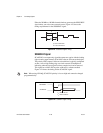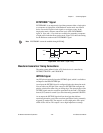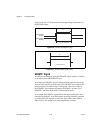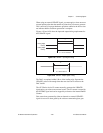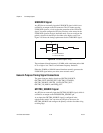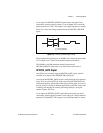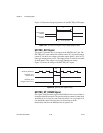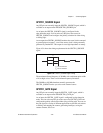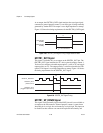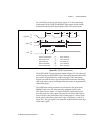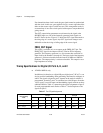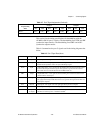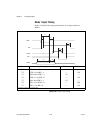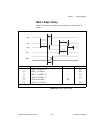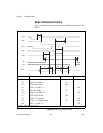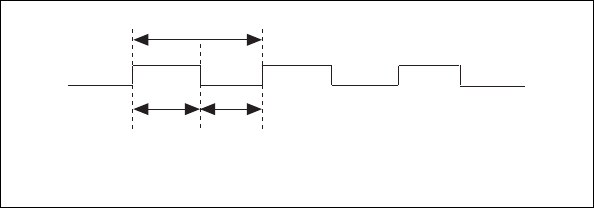
Chapter 4 Connecting Signals
© National Instruments Corporation 4-47 AT E Series User Manual
GPCTR1_SOURCE Signal
Any PFI pin can externally input the GPCTR1_SOURCE signal, which is
available as an output on the PFI3/GPCTR1_SOURCE pin.
As an input, the GPCTR1_SOURCE signal is configured in the
edge-detection mode. You can select any PFI pin as the source for
GPCTR1_SOURCE and configure the polarity selection for either rising
or falling edge.
As an output, the GPCTR1_SOURCE monitors the actual clock connected
to general-purpose counter 1, even if the source clock is being externally
generated by another PFI. This output is set to high-impedance at startup.
Figure 4-34 shows the timing requirements for the GPCTR1_SOURCE
signal.
Figure 4-34.
GPCTR1_SOURCE Signal Timing
The maximum allowed frequency is 20 MHz, with a minimum pulse width
of 10 ns high or low. There is no minimum frequency limitation.
The 20 MHz or 100 kHz timebase normally generates the
GPCTR1_SOURCE unless you select some external source.
GPCTR1_GATE Signal
Any PFI pin can externally input the GPCTR1_GATE signal, which is
available as an output on the PFI4/GPCTR1_GATE pin.
As an input, the GPCTR1_GATE signal is configured in edge-detection
mode. You can select any PFI pin as the source for GPCTR1_GATE and
configure the polarity selection for either rising or falling edge. You can use
the gate signal in a variety of different applications to perform such actions
as starting and stopping the counter, generating interrupts, saving the
counter contents, and so on.
t
w
= 23 ns minimum
t
p
= 50 ns minimum
t
w
t
w
t
p




